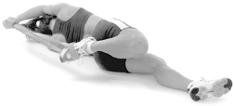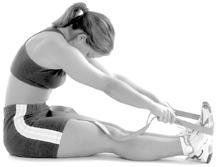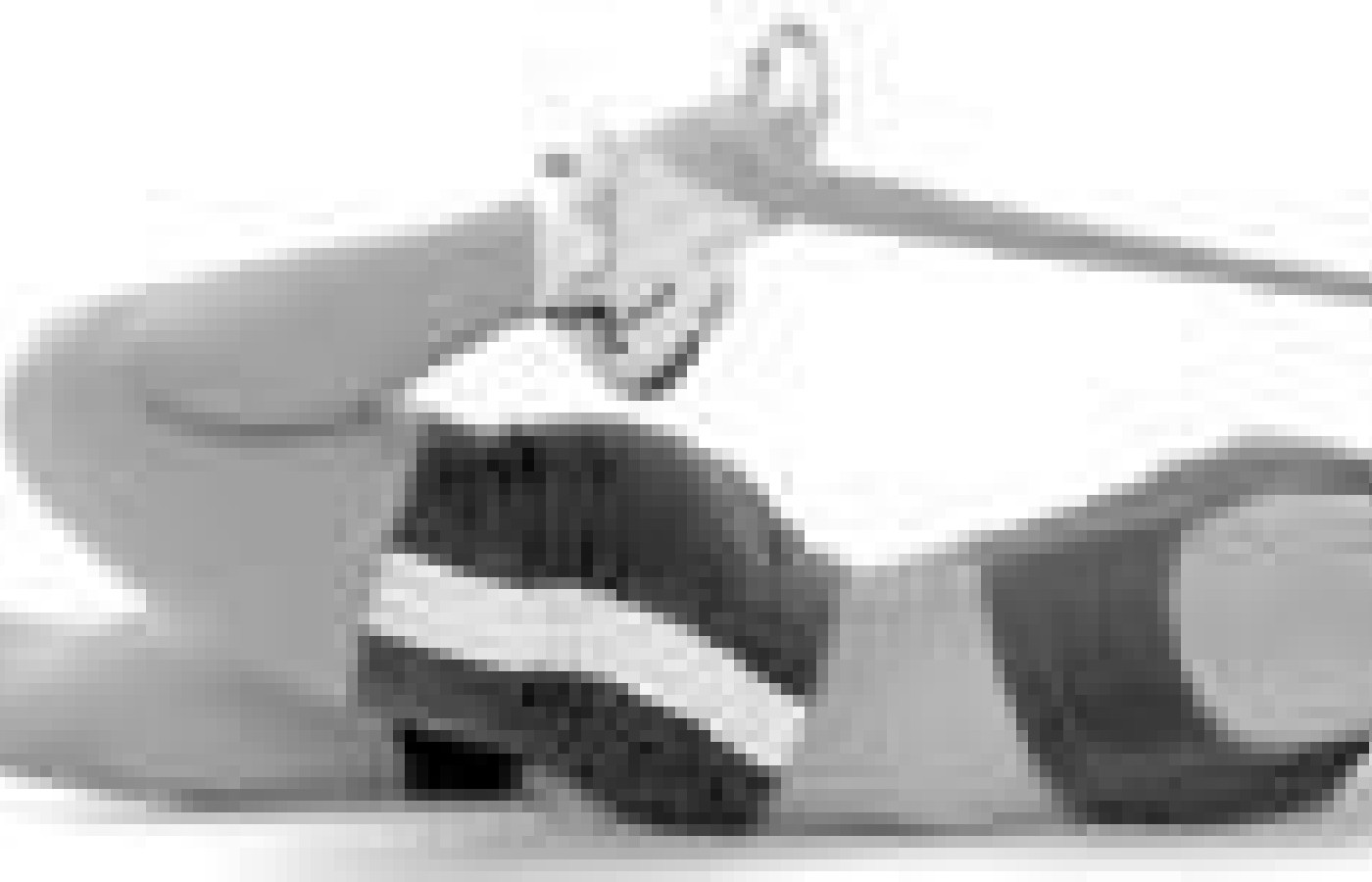Some doctors thrive in a personality-based clinic and have a loyal following no matter what services or equipment they offer, but for most chiropractic offices who are trying to grow and expand, new equipment purchases help us stay relevant and continue to service our client base in the best, most up-to-date manner possible. So, regarding equipment purchasing: should you lease, get a bank loan, or pay cash?
Demystifying the Treatment of Sprain/Strain Injuries of the Lower Back, Part II
Editor's note: Part I of Dr. Dubin's article appeared in the January 26, 1999 issue of DC.
Examination and Treatment of Low Back Pain
To properly diagnose and treat a low back syndrome, a detailed history, a thorough examination, and an understanding of the pain-sensitive structures and postural and phasic muscles in the lumbopelvic region are necessary.
History
Taking a detailed history is one of the most important aspect of an examination. The practitioner has to find the various clues from the patient's history and then piece together the exact cause(s) of the patient's low back pain. Some of the following questions are good to ask the patient: What was the date of onset of your low back pain? Was there a particular incident which caused your low back pain? Did you have a sudden onset of low back pain, or did the pain come on gradually? What exacerbates your low back pain complaints? Is this the first time you have suffered from low back pain?
The examiner should ask about past surgeries, accidents, serious illnesses or blood in the urine. Affirmative answers to these questions may be red flags of possible tumors, infections or visceral disorders, and warrant a referral to a primary doctor.
Observation
As patients walk into the examining room, their gait should be carefully evaluated during the stance and swing phase for muscular imbalances. Do they have a toe in or toe out gait? This may reveal possible medial or lateral hamstring tightness. Do they have a gluteus medius gait? Patients with this type of gait will tilt the entire torso over the midstance femur and will reveal weakness of the gluteus medius musculature. Do they have a gluteus maximus gait? This type of gait will reveal weakness of the gluteus maximus musculature in which the patient's entire torso will hyperextend over the pelvis during early stance phase.10
Do these patients have a decreased stride length? This may reveal tightness of the hamstrings and hip flexor musculature. Do they have an antalgic lean or favor one leg over the other? When the patients are in the static position, the practitioner should observe for a sway back or lordotic posture. The sway back patient will have a flat lower back with an increase in the posterior curve of the thoracic and thoracolumbar region. Patients will usually complain of pain in the thoracolumbar junction. This posture develops as a result of weak hip flexors and lower abdominal musculature. Patients with a lordotic posture will have an increase in the anterior curve of the low back, caused by tightness of the psoas and erector spinae musculature and weakness of the abdominal and gluteus maximus musculature. Patients with a lordotic posture will usually complain of pain across the low back.
Muscle Testing and Orthopedic Tests
Contract-relax-antagonist-contract stretching of the hamstrings, quadriceps, hip flexors, external rotators and abductor musculature bilaterally is not only effective in treating low back pain, but is also an effective tool in revealing the various muscular imbalances which may be the cause of the pain. Muscle testing hip extension may reveal improper firing sequences as a result of weakness of the gluteus maximus musculature. Double leg raising and lowering and trunk curl sit-ups are useful in evaluating psoas and abdominal musculature strength.
Patients with weak abdominals when lying supine with their legs extended and raised 90 degrees will prematurely arch their back when lowering their legs to the ground. Wilson's test is useful for revealing tightness in the rectus femoris, psoas and tensor fascia latae musculature. Some of the other useful orthopedic tests are Ober's test; Trendelenberg's test; sit-and-reach test; Nachlas' test; Ely's test; Valsalva's test; Kemp's test; and straight leg raising test. Lower extremity deep tendon reflexes and motor and sensory tests of the lower extremities should be conducted. If Valsalva's test, Kemp's test and straight leg raising test continue to test positive, and the patient's complaints of radicular symptoms in their lower extremities continue, then a referral to a neurologist or an orthopedic surgeon for an evaluation would be warranted.
Treatment
Keys to Treating Low Back Strain/Sprain Injuries- Control pain.
- Increase flexibility of the lumbopelvic musculature.
- Increase strength of the lumbopelvic musculature.
- Body must be trained to do certain motions.
- Decrease emotional stress/depression.
In my treatment protocol, #1-4 will be addressed. Feldenkrais and Thomas Hannah relaxation techniques would be useful for #5 if necessary. Both of these doctors explain how emotional stress can cause voluntary reactions to become involuntary. This can lead to sustained contracture of the erector spinae musculature. The goal is to become aware of this and train your body to regain voluntary control of these reflexes, thereby relaxing the low-back musculature.11
There are three phases of healing: acute phase (1-2 days); repairative phase (2 days - 6 weeks); and a remodeling phase. As soon as the patient with a strain/sprain low-back injury can tolerate range-of-motion exercises, acute therapy should commence to promote a more efficient healing process during the reparative phase.
A recent book on repetitive motion disorders published by the American Academy of Orthopaedic Surgeons cites a histologic study in which Nirschl proposed that overuse syndromes are not an inflammatory process but instead represent failed repair of disrupted connective tissue. Supporting this theory were biopsy samples from tendons of patients with epicondylitis that showed disorganized collagen; pale, haphazardly arranged mesenchymal cells; an excessive amount of matrix tissue; and vascular buds with an incomplete lumen and insufficient elastin. This disorganized mesenchymal tissue has poor potential for healing. Based on these observations, a reasonable goal for healing would be to stimulate an inflammatory mediated process with appropriately oriented fibroblasts (laying down parallel fibers in the tendons, which would increase their strength) and to reduce the amount of matrix tissue through the use of appropriate exercises.12
Mooney states that active release techniques (ART* soft-tissue management system) "is a promising new deep-tissue technique for treating cumulative trauma disorders."12 A practitioner skilled in this technique can palpate fibrotic lesions in the injured tissues. A fibrotic lesion will predispose this region to hypoxia, ischemia, and will result in a trigger point region with improperly oriented fibroblast fibers. To effectively treat this lesion, the practitioner will trap the lesion, and the patient will take the tissue from its shortened to elongated position. The goals for using this technique are to break up the lesions to allow the muscle to regain its proper length and strength, and to decrease painful symptoms.13When the muscle is properly treated and soft tissue motion is restored, the next goal for treatment is to free up joint motion. Manipulation will be used to free up joint fixations in the lumbar and sacroiliac region.
It has been demonstrated that meniscoids are present in the zygapophysial joints of the spine and contain innervation by C fibers. It seems reasonable that they might become entrapped between the opposing joint surfaces, and gapping of the joint might release the entrapped meniscoid, resulting in enhanced function. More recently, it has been postulated that stress on the capsule of the involved joint alters the afferent nerve traffic from the type I mechanoreceptors so that central control of motion cannot determine the joint's spatial relationship. This alteration in neural control is postulated to affect the length and tone of the segmentally related muscles, further restricting normal joint movement.6
A high-velocity, low-amplitude thrust technique will cause a 1/8" gapping at the joint and will free up joint motion. ART and manipulative procedures are very effective treatment tools which free up soft tissue and joint restrictions in the low-back region.
Teaching patients with low back pain a daily effective stretching routine that they can conduct at home will speed up the process of healing and will also prove useful in the prevention of low-back pain after treatment is ended. Using a flex-band 15-20 minutes per day to stretch the hip flexors (see Figures 1.1A and 1.1B), hamstrings (see Figures 1.2A and 1.2B), external hip rotators and abductors (see Figure 1.3), adductors (see Figure 1.4), erector spinae musculature (see Figure 1.5) and quadriceps (see Figure 1.6) will enhance the recovery process.

Figure 1.1A

Figure 1.1B

Figure 1.2A

Figure 1.2B

Figure 1.3

Figure 1.4

Figure 1.5

Figure 1.6
I find a high compliance rate with flex bands, mainly because of their convenience. They allow you to do more range-of-motion exercises. Exercise balls tend to have a low compliance rate.They are effective tools, but they are too inconvenient and difficult to store at home.
Strength training for the lumbopelvic region should also commence with emphasis placed on strengthening the abdominal musculature, gluteus maximus musculature and quadricep musculature.
Combo therapy is a modality which may prove beneficial in speeding up the healing process of a low back strain/sprain injury. Combination therapy is an effective modality in which the electric muscle stimulation machine is connected to the ultrasound machine, allowing one to direct electric muscle stimulation and ultrasound through the ultrasound head. Ultrasound therapy in a continuous mode is effective for heating localized areas of deeply placed tissues. The effect of heat at a therapeutic level may induce muscle relaxation. Vasodilation also has a direct effect on removal of metabolites, which further decrease muscle excitability and allow relaxation. Electrical muscle stimulation may be used to maintain or gain range of motion and to break down or stretch adhesions. Indirectly, it may also influence pain, particularly when the pain is secondary to muscle spasm.14
Conclusion
Having an understanding of the anatomical and physiological structures of the low back and combining that with a strong biomechanical knowledge of the mechanisms which can cause low back pain are essential for a proper diagnosis of this condition. However, even though one has an understanding of the structures in the low back, the diagnosis can be confusing because of multilevel innervation and the instances where several conditions contribute to the low back syndrome.
Manipulation and ART are two effective tools in freeing up soft tissue and joint restrictions. In this author's opinion and clinical experience, a low back strain/sprain injury can be appropriately treated when combining ART, a flexibility program utilizing flex bands, and a proper strengthening routine.
References (includes references from parts I and II)
- British Medical Journal April 26, 1997;314:7089, p. 1225.
- Fordyce W. Nursing Homes. International Publishing Group, 1996, p. 32.
- Cailliet R. Low Back Pain Syndrome, 4th edition. Philadelphia: Davis Company, 1988, pp. 22-24, 76-103.
- Cramer G, Darby S. Basic and Clinical Anatomy of the Spine, Spinal Cord, and ANS. Mosby-Year Book, Inc., 1995, pp. 205-217, 251-271, 355-370.
- Greenman P. Principles of Manual Medicine, second edition. Baltimore: Williams & Wilkins, 1996, pp. 146-147, 449-456.
- Lewit K. Manipulate Therapy in Rehabilitation of the Locomotor System, second edition. Butterworth-Heinemann Ltd., 1991, pp. 14-32, 126.
- Kendall F, McCreary E, Provance P. Muscle Testing and Function. Baltimore: Williams & Wilkins, 1993, pp. 133-176, 350-354.
- Janda V. Muscle strength in relation to muscle length, pain and muscle imbalance. In: Harms-Rindahl K (ed.) Muscle Strength. New York: Churchill Livingstone, 1993.
- Robbins. Robbins' Pathologic Basis of Disease, fourth edition. Philadelphia: W.B. Saunders Company, 1989.
- Michaud T. Foot Orthoses and Other Forms of Conservative Foot Care, Newton, MA, 1997, p. 181-191.
- Hanna T. Somatics. Addison-Wesley Publishing Company, Massachusetts, 1988, p. 42-95.
- Mooney V. The Journal of Musculoskeletal Medicine 1998, p. 11-18.
- Leahy M. Improved treatments for carpal tunnel. Chiro Sports Med 1995; Williams & Wilkins, p. 6-9.
- Reid DC. Sports Injury Assessment and Rehabilitation. New York: Churchill Livingstone Inc., 1992, p. 31-64.
Additional information was gathered from the following sources:
- Liebenson C. Rehabilitation of the Spine. Baltimore: Williams & Wilkins, 1996.



